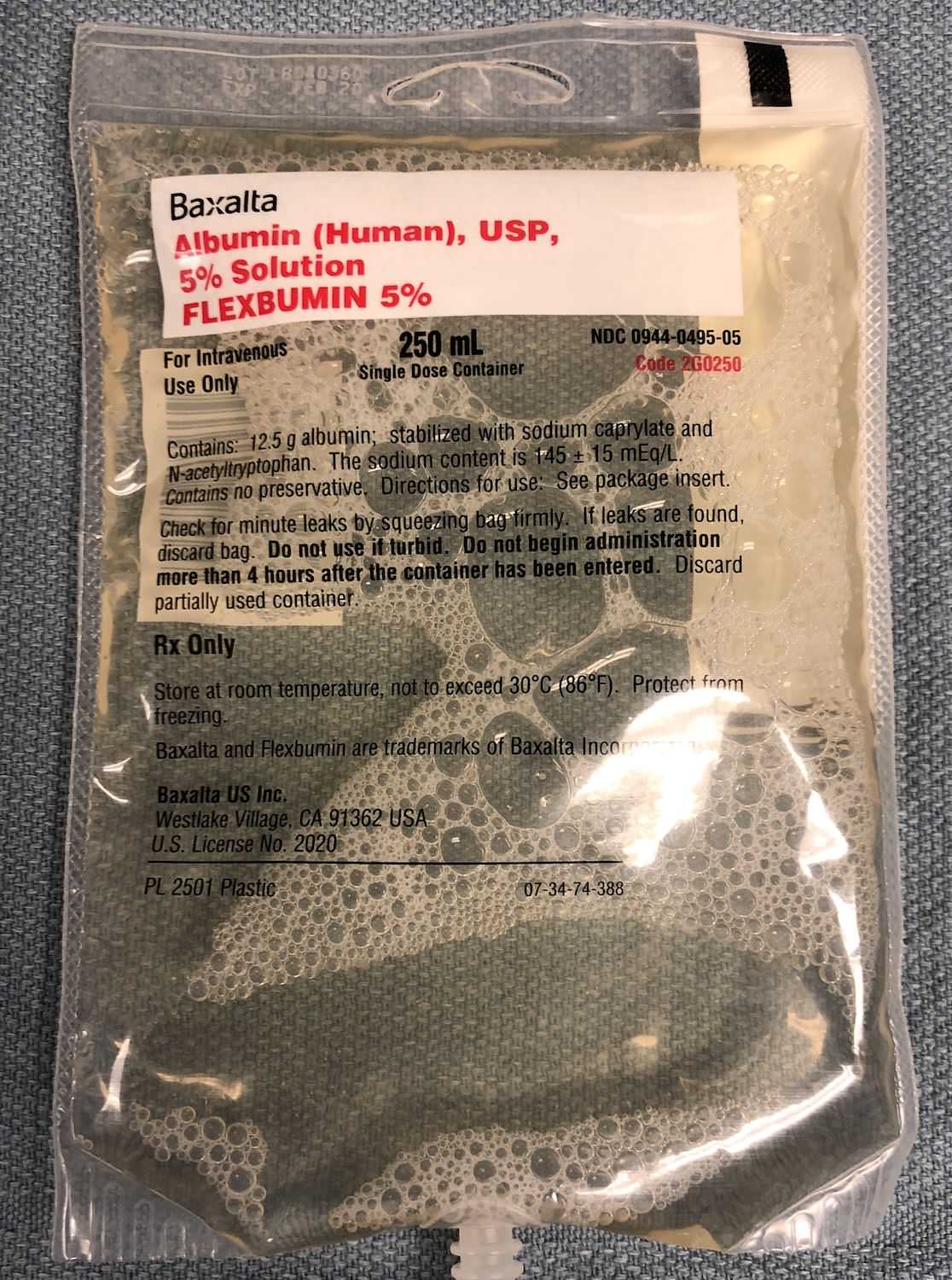Albumin is the most abundant globular plasma protein, an important transport protein, and the primary determinant of oncotic pressure (the colloid osmotic pressure that opposes hydrostatic pressure in determining transcapillary flow). The colloid versus crystalloid debate is a timeless point of contention in acute care medicine, but the general teaching is that “albumin stays in the vessels longer” and is therefore a “better” form of intravascular resuscitation. Throughout my training, I’ve seen so many different situations where albumin was/was not used, and now as an attending, the decision to use albumin is still something I go back-and-forth on.
As we learn more about the endothelial glycocalyx (the layer that lines the inside of blood vessels), it’s clear that “capillary leak” syndromes (e.g., sepsis) may actually displace more albumin into the interstitium causing fluid to follow in suit. In other words, albumin that leaks out of the blood vessels is NOT able to pull fluid back intravascularly leading to interstitial congestion/edema. With all that said, evidence over the last two decades suggests albumin may confer benefits in ARDS and severe sepsis but harm those with traumatic brain injuries (TBIs). The discussion of MORTALITY benefit is very mixed overall across heterogeneous patient populations.
As an intensivist, I use albumin in patients with large body surface area burns, after large volume paracenteses (for every liter above 5 liters, I’d give 5 grams per liter removed), and hypoalbuminemic patients with hepatorenal syndrome (along with vasoconstrictors), spontaneous bacterial peritonitis (SBP), and ascites that just didn’t respond to diuretic challenges (25% albumin boluses with Lasix drips). And yes, I’ll use it as an intravascular volume expander too.
As an anesthesiologist, I use albumin (along with crystalloids) to limit the overall volume of fluid in certain surgeries (ie, bilateral lung transplantation, patients with low ejection fractions and/or right-heart dysfunction). I also use it as a colloid expander in patients who don’t need a blood product transfusion and seem to be hypovolemic but refractory to crystalloids (ie, intraoperative sepsis).
The percentage of albumin (ie, 5%) tells you how many grams of albumin protein are in 100 cc of the fluid. For example, 250 cc of 5% albumin has 12.5 grams of albumin. 100 cc of 25% albumin has 25 grams of albumin. Keep in mind that this colloid is expensive, so be mindful using it!
Drop me a comment below with questions! 🙂






